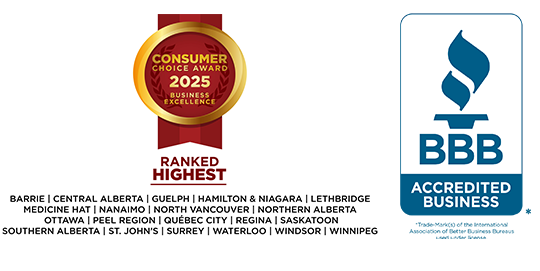-
More than 60% feel confident about being able to cover their living expenses this year without going further into debt (+5pts since March)
-
Significantly fewer regret the amount of debt they have taken on in life (35%, -6pts since March)
-
Large decline in the number concerned about their current level of debt (35%, -13pts since March)
BURLINGTON, ON – July 20, 2020 – While the financial picture for many Ontarian households looked bleak last quarter, many have stayed afloat thanks to the current raft of pandemic-related support programs. The latest MNP Consumer Debt Index, conducted quarterly by Ipsos, found Ontarians feel more confident than ever about being able to cover their living expenses for the next 12 months without going further into debt (62%, +5). Compared to pre-pandemic levels, significantly more Ontarians rate their current debt situation as excellent (44%, +5). More than a quarter (26%, +2) feel their debt situation is better now than it was a year ago. And over a third (34%, +2) believe it is better now than it was five years ago.
The newfound optimism is also visible in measures showing significantly fewer regret the amount of debt they have taken on in life (41%, -6) or are concerned about their current level of debt (35%, -13). In fact, compared to other provinces, Ontarians are the least likely to say they have those regrets and concerns.
“The optimism across the province is likely a result of government financial relief measures related to the pandemic. But many, especially those required to stay home, also found it easier to spend less over the last few months,” says David Gowling, a Burlington-based Licensed Insolvency Trustee with MNP LTD. “Consumer spending was dramatically altered because restaurants, theatres, malls, and other bastions of discretionary spending were closed.”
With widespread store closures leaving fewer opportunities for spending and many saving on gas and community costs while working from home, Ontarians now say they have more wiggle room in their household budgets each month. On average, after paying bills and debt obligations, they report having $98 more at month-end than they did in early March.
“Even with marginal increases in groceries, utilities, and online shopping, many households have reported more wiggle room in household finances. In some cases, this has made them feel more capable of keeping up with previously unsustainable debt payments,” explains Gowling.
The number of Ontarians who are $200 or less away from financial insolvency at month-end decreased six points since early March (43%). This includes 24 percent who report already being insolvent and are unable to cover their bills and debt payments, a decrease of two points this wave.
“As the economy begins to re-open we should also expect to see some efforts from creditors to catch people up with payments. Whether that takes the form of increased monthly payments or extended loan terms, this will likely put some households further behind and deeper in debt,” says Gowling.
“It doesn’t take much to push many households back into dangerous territory. Just a few hundred dollars per month — less than a few unexpected expenses — is enough to tip the scales toward an insolvency scenario.”
So far, support from the government, mortgage deferrals, and the flexibility of creditors have all contributed to a significant decline in insolvency filings since the pandemic began. In May alone, consumer filings in Ontario declined 44 percent compared to the same month last year.
Given the already shaky ground Ontarians were standing on before the COVID-19 crisis — not to mention the magnitude of the virus, its economic impacts, and the government response — Gowling says it won’t be at all surprising to see nationwide insolvencies jump.
“We will likely see these numbers rapidly return to pre-pandemic levels as subsidies and stimulus dollars dry up, creditors begin clawing back deferred payments, and consumer spending returns to pre-pandemic levels,” says Gowling.
Some households are bracing themselves for a crash landing when the current relief measures end and leave them facing an uncertain post-pandemic economy. One in 10 Ontarians expect their debt situation to be worse one year from now (9%, -1).
For those who are struggling with debt, Gowling notes Bankruptcy is not the first nor is it always the best option. Licensed Insolvency Trustees are the only federally regulated debt professionals empowered to provide a full range of debt relief options including Consumer Proposals, informal debt settlements and bankruptcies. They take a customized approach and provide an unbiased opinion to help severely indebted individuals understand their rights and determine the best path forward.
About MNP LTD
MNP LTD, a division of the national accounting firm MNP LLP, is the largest insolvency practice in Canada. For more than 50 years, our experienced team of Licensed Insolvency Trustees and advisors have been working with individuals to help them recover from times of financial distress and regain control of their finances. With more than 230 offices from coast-to-coast, MNP helps thousands of Canadians each year who are struggling with an overwhelming amount of debt. Visit
MNPdebt.ca to contact a Licensed Insolvency Trustee or use our free
Do it Yourself (DIY) debt assessment tools.
In light of the social distancing measures currently in place, MNP LTD is currently offering free consultations via videoconferencing (Skype, Messenger, Zoom, FaceTime, etc.) and by phone. Their team of Licensed Insolvency Trustees are empowered to help those struggling financially to make the most informed choices to deal with their debt during this time. Visit
MNPdebt.ca to book an appointment or to start a live chat.
About the Survey
These are some of the findings of an Ipsos poll conducted between June 1-2, 2020, on behalf of MNP LTD. For this survey, a sample of 2,001 Canadians aged 18 years and over was interviewed. Weighting was then employed to balance demographics to ensure that the sample's composition reflects that of the adult population according to Census data and to provide results intended to approximate the sample universe. The precision of Ipsos online polls is measured using a credibility interval. In this case, the poll is accurate to within ±2.5 percentage points, 19 times out of 20, had all Canadian adults been polled. The credibility interval will be wider among subsets of the population. All sample surveys and polls may be subject to other sources of error, including, but not limited to, coverage error and measurement error.
A summary of the provincial data is available by request.


